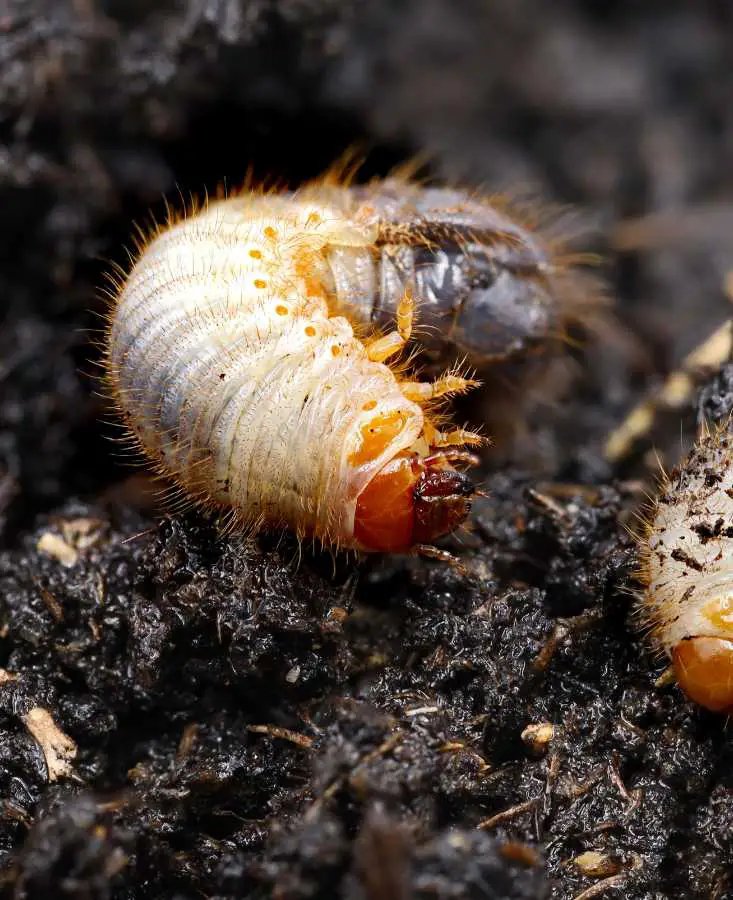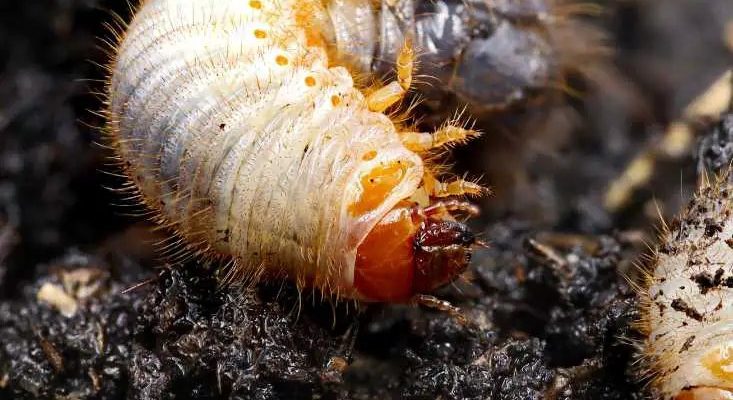
Grub worms are the larval forms of various beetles, and they often pop up in compost piles because they love decaying organic matter. But here’s the twist: not all grub worms are created equal. Some contribute positively to the composting process, while others may not be as beneficial. As we dive into this topic, we’ll explore what these little guys are doing in your compost, how to identify which ones you have, and whether you should be rolling out the welcome mat or kicking them to the curb.
What Are Grub Worms?
Grub worms, or simply “grubs,” are the juvenile stages of certain beetles. They tend to be C-shaped, white or off-white, and can grow to be about an inch long. While they might look a bit creepy, grubs are part of a natural process that helps break down organic material into compost.
You might be wondering how they fit into your compost pile. Think of grubs like little construction workers. They’re not just roaming around aimlessly; they consume decomposing plant matter, which helps speed up the composting process. They break down grass clippings, vegetable scraps, and other organic waste, turning it into nutrient-rich compost.
However, not all grubs are created equal. Some types, such as those from the Japanese beetle or June beetle, can cause issues. These varieties might damage your plants in their adult form. To sum it up, knowing what you’re dealing with is key to understanding if these critters are allies or foes in your composting journey.
Why Are Grub Worms In Your Compost Pile?
If you’ve noticed grub worms hanging out in your compost, it’s because they’ve found this space to be a buffet! Compost piles offer warmth, moisture, and a smorgasbord of decaying material that grubs love. They thrive in this environment, munching away and contributing to the breakdown of your compost.
Here’s the thing: while it might feel unsettling to find these little guys in your pile, their presence indicates that the composting process is alive and well. They’re basically working hard behind the scenes, helping to turn your kitchen scraps into dark, crumbly compost. In a way, they’re nature’s recycling agents, converting waste into a valuable resource for your garden.
But like all good things, moderation is important. If you see a massive infestation of grubs, it could mean your compost is too wet or rich in nitrogen. Finding that balance is key for a healthy compost pile and can prevent any potential issues down the line.
Are Grub Worms Helping Your Compost?
Absolutely! Grub worms can be beneficial for your compost pile. As they chomp away on decomposing organic matter, they help break down materials quicker. Their natural digestion makes nutrients more accessible for plants when you eventually use the compost in your garden.
Here’s a little story to illustrate. Imagine you’ve got a garden that desperately needs some TLC. You whip up a batch of compost, and in comes the grubs, busy doing their thing. Thanks to their efforts, your compost matures faster, and when you put it on your garden beds, your plants thrive! It’s like having your own little team of superheroes working behind the scenes to ensure your plants have the best nutrients possible.
But it’s also essential to monitor the population of grubs in your compost. A small number is helping, but if they start taking over, it could be a sign of an imbalance. So, while they’re generally good news, it’s about keeping an eye on their numbers.
Identifying Good vs. Bad Grub Worms
Differentiating between helpful and harmful grubs can be tricky. The good news? It’s not impossible! Generally, beneficial grubs come from beetles that are not known to be pests. These include species such as ladybugs and certain types of scarab beetles.
On the flip side, grubs from the Japanese beetle or May bugs can spell trouble. These pests can cause significant damage to your garden once they mature into adults. To identify them, look for:
- Color: Good grubs typically have a pale, creamy white color, while bad grubs may appear darker.
- Shape: Healthy grubs tend to be more C-shaped and plump, whereas troubled ones may seem thin and elongated.
- Location: Good grubs usually thrive in well-managed compost, while bad grubs may be found in over-watered, overly fertilized piles.
It pays to be observant. If you’re unsure, researching local beetles can help you identify which grubs are present in your compost.
Managing Grub Worms In Your Compost
Now that we know grubs can be mixed bags, how do you manage their presence effectively? Here are some tips to maintain a balanced compost pile while keeping grubs in check:
1. **Maintain Aeration**: Aerate your compost pile regularly. This helps keep it balanced and discourages any unwanted pests from moving in.
2. **Check Moisture Levels**: Make sure your pile isn’t too wet. If it is, consider turning it or adding dry materials like leaves or straw to absorb excess moisture.
3. **Add Diverse Materials**: Incorporate a variety of green (nitrogen-rich) and brown (carbon-rich) materials. This diversity helps create a balanced environment that supports beneficial organisms while discouraging pests.
4. **Regular Inspections**: Every now and then, take a look at the grubs in your compost. If you’re seeing too many bad grubs, it might be time to intervene with some of the strategies mentioned above.
By staying proactive, you can ensure that your compost remains a healthy habitat for those helpful grubs while keeping the unwanted ones at bay.
When To Be Concerned About Grub Worms
While a handful of grubs can be good for your compost, you might start to worry when you see an overwhelming number. If your compost starts to smell bad or if you notice that the temperature is unusually low, that could signal an imbalance. Too many grubs can lead to excess moisture and anaerobic conditions, which are not good for composting.
Moreover, if you see grubs moving into your garden beds, it might be a sign that they’re ready to transition into adults and begin damaging your plants. In that case, it might be wise to take action.
If managing the grub population feels overwhelming, you can also consider introducing beneficial nematodes to your soil. These tiny organisms can help keep the grub population in check naturally, allowing you to maintain a healthy ecosystem both in your compost and garden.
Final Thoughts on Grub Worms in Compost Piles
To wrap it up, grub worms can be both friends and foes in your compost pile. They play a significant role in breaking down organic materials, making your compost richer and more beneficial for your garden. Recognizing the good from the bad is crucial, and with some simple management techniques, you can create a thriving compost environment that supports both.
Don’t be afraid of grubs; instead, learn to embrace them as part of nature’s fascinating recycling system. After all, every layer of your compost pile contributes to the earth’s health, turning scraps into resources that will feed your plants and nurture your garden. Happy composting!

